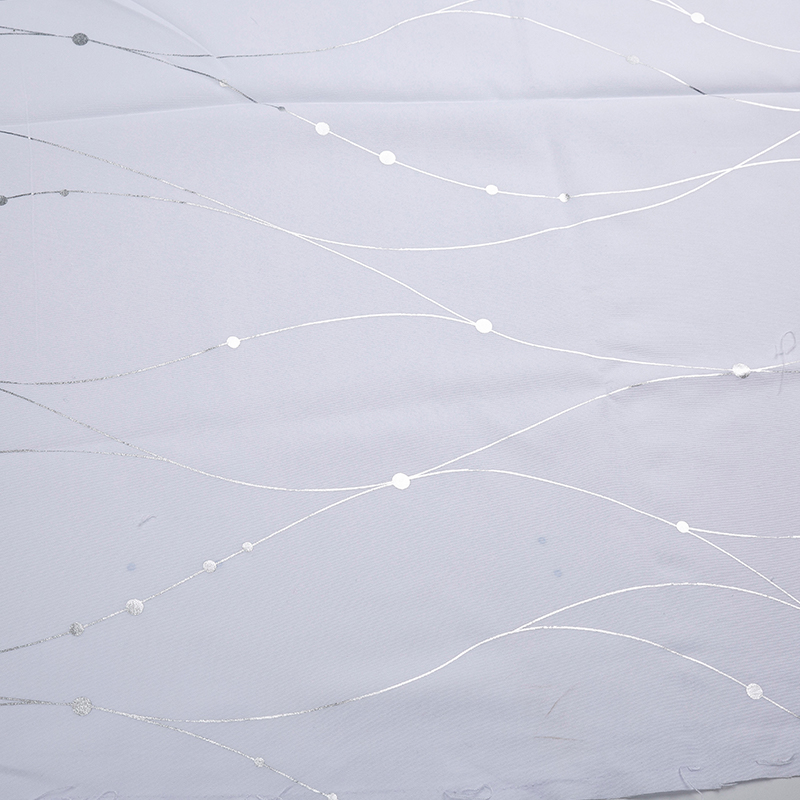Premium quality since 2002!
Polyester bronzing fabric is a fascinating material that has carved out a niche in the textile world, blending practicality with an eye-catching aesthetic. Its unique combination of durability, versatility, and shimmering appeal makes it a popular choice for a range of applications, from fashion to home décor. But what exactly is polyester bronzing fabric, and why does it stand out in such a crowded market? Let’s dive into its origins, characteristics, uses, and care.
At its core, polyester bronzing fabric is made from polyester fibers—a synthetic polymer derived from petroleum-based products. Polyester itself has been around since the mid-20th century, revolutionizing textiles with its resilience and adaptability. The "bronzing" aspect refers to a specialized finishing process applied to the fabric, giving it a metallic or glowing sheen reminiscent of bronze. This effect is achieved through techniques like foil stamping, metallic coatings, or specialized dyes that reflect light in a way that mimics the luster of metal.
The allure of polyester bronzing fabric lies not only in its visual impact but also in its functional properties. Polyester is inherently strong and resistant to wrinkles, shrinking, and mildew, making it an ideal base for creating long-lasting textiles. When combined with the bronzing treatment, the fabric gains an additional layer of intrigue, offering designers and consumers alike a material that feels both luxurious and durable. It’s no wonder this fabric has found its way into high-end fashion collections, theatrical costumes, upholstery, and even event decorations.
One of the most exciting aspects of polyester bronzing fabric is its versatility. In the realm of fashion, it’s often used to create statement pieces like dresses, jackets, and skirts that catch the light and draw attention. Designers appreciate how the bronzed finish adds dimension and texture to garments without requiring heavy embellishments. Meanwhile, in interior design, the fabric brings a touch of opulence to spaces when incorporated into curtains, cushions, or tablecloths. Its reflective quality can enhance lighting schemes, adding warmth and depth to any room.

Despite its many advantages, working with polyester bronzing fabric requires some consideration. Because of its synthetic nature, it doesn’t breathe as well as natural fibers like cotton or linen, which might make it less suitable for warm climates or activewear. Additionally, the bronzing finish can be delicate; improper handling or harsh cleaning methods may dull its shine over time. To maintain its brilliance, it’s best to follow specific care instructions, such as hand washing or using a gentle machine cycle with cold water, avoiding bleach, and air-drying whenever possible.
From an environmental perspective, polyester bronzing fabric presents a mixed bag. On one hand, polyester is notorious for being non-biodegradable and contributing to microplastic pollution when washed. However, advancements in recycling technologies have led to the development of recycled polyester, which reduces waste by repurposing existing materials. Some manufacturers are also exploring eco-friendly finishes to minimize the environmental footprint of the bronzing process. As sustainability becomes increasingly important to consumers, these innovations could pave the way for more responsible production practices.
What sets polyester bronzing fabric apart is its ability to transform ordinary items into something extraordinary. Whether draped across a runway model or adorning a living room sofa, it exudes a sense of elegance and modernity. Its shimmering surface invites creativity, inspiring designers to push boundaries and experiment with new ideas. For those who crave a little extra sparkle in their lives, this fabric offers a perfect blend of glamour and functionality.

 English
English 简体中文
简体中文









